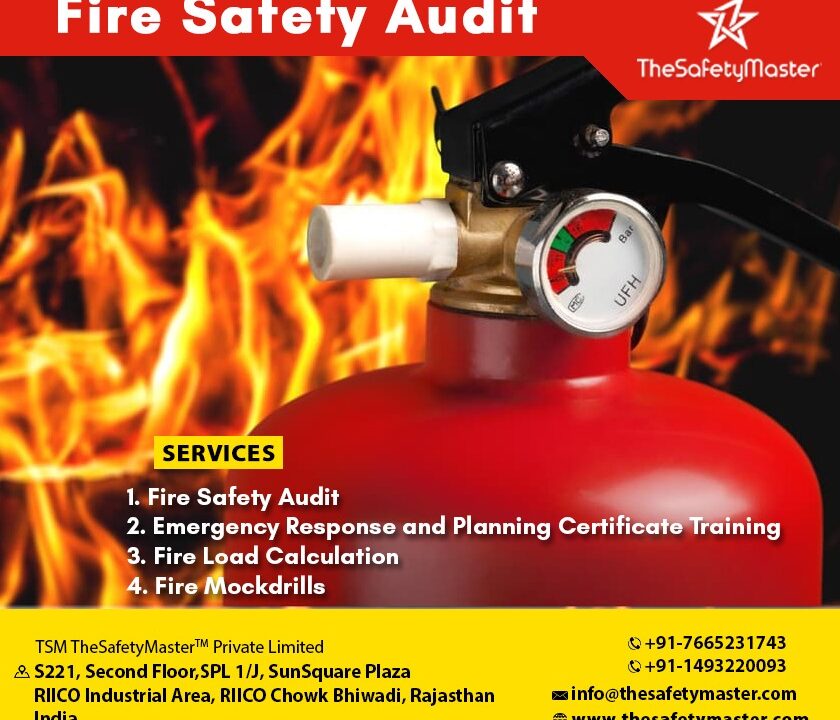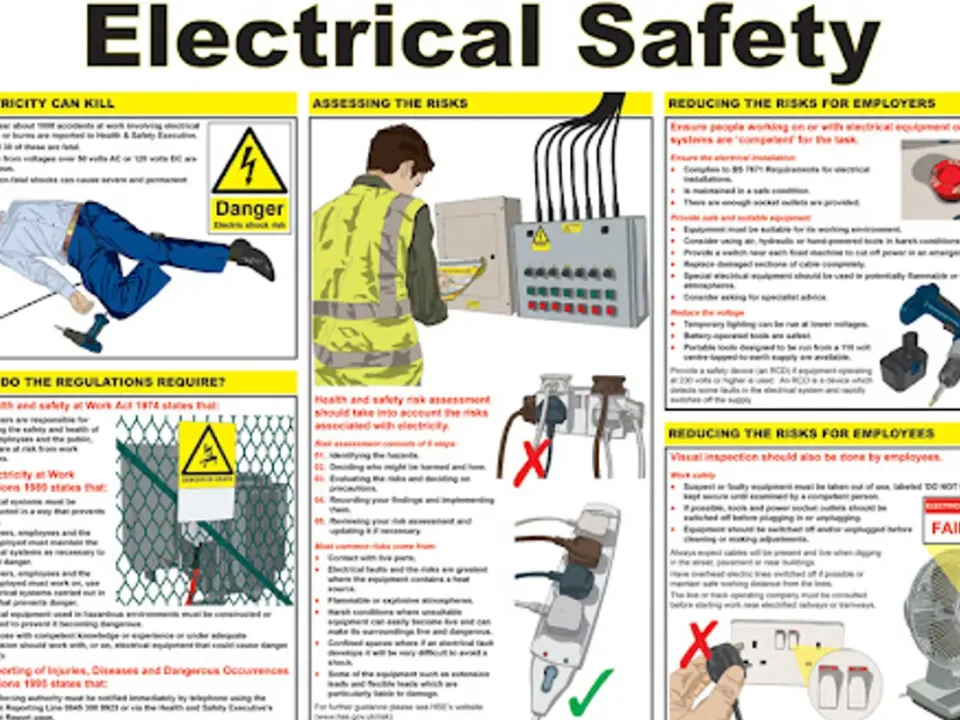Safety Audit as per Factory Act In India

Behavior Based Safety Metrics: Measuring Success and Continuous Improvement
August 7, 2023
HAZOP Leadership Training for 2 Days by TheSafetyMaster
August 8, 2023Ensuring the safety and well-being of workers is a paramount concern in any industrial setting. In India, the Factory Act serves as a crucial legislative framework to protect employees and prevent workplace accidents. However, mere compliance with the regulations outlined by the Act is not enough; proactive measures must be taken to identify potential hazards, mitigate risks, and foster a culture of safety within factories.
In this comprehensive article, we will delve into the intricacies of conducting a safety audit as per the Factory Act in India. We will explore step-by-step guidelines for assessing workplace safety, implementing effective measures, and ensuring compliance with regulations. Additionally, we will discuss strategies for engaging employees, stakeholders, and government agencies to collectively work toward creating safe working environments.
Understanding Safety Audit and its Importance
A safety audit comprehensively evaluates a factory’s adherence to safety regulations and standards established by the Factory Act in India. It involves a systematic review of safety practices, procedures, equipment, and documentation to ensure compliance and identify areas for improvement. The primary purpose of a safety audit is to prevent accidents, protect workers’ health, and create a safe working environment.
Importantly, safety audits go beyond mere compliance with legal requirements; they reflect an organization’s commitment to prioritizing the well-being of its employees. By conducting regular safety audits, factories can proactively identify potential hazards, mitigate risks, and implement necessary measures to safeguard their workforce. Furthermore, these audits promote continuous improvement by fostering a culture of accountability and diligence in maintaining high standards of workplace safety.
The Factory Act in India: A Brief Overview
India, a nation known for its rich cultural heritage and rapid industrial growth, recognizes the paramount importance of ensuring the safety and well-being of its workers. The Factory Act, enacted in 1948, stands as a stalwart guardian of labor rights and occupational safety. This legislation empowers the Indian government to regulate various aspects related to factories, including working conditions, health measures, welfare provisions, and safety standards.
With a vision to promote a secure work environment for millions of workers across the country, the Factory Act mandates that all factories comply with stringent regulations aimed at preventing accidents and promoting employee welfare. Under this act, factory owners are required to obtain licenses by meeting specific criteria related to infrastructure, machinery installation, hazard control mechanisms, emergency preparedness plans, and more. These regulations not only ensure worker protection but also foster an atmosphere conducive to increased productivity and sustainable growth.
Step-by-Step Guide to Conducting a Safety Audit
Conducting a safety audit is a crucial step towards ensuring the well-being of workers and compliance with the Factory Act in India. This step-by-step guide will walk you through the process, helping you identify potential hazards, assess risks, and implement effective safety measures.
1. Establish the Audit Objectives: Begin by defining the objectives of your safety audit. Are you looking to identify specific hazards or evaluate overall compliance? Clearly outlining your goals will help focus your efforts and ensure thoroughness.
2. Plan and Prepare: Develop an audit plan that outlines the scope, timeline, and resources required for the process. Gather relevant information such as floor plans, safety manuals, incident reports, and any applicable legal requirements to aid in conducting a comprehensive audit.
3. Assign Responsibilities: Determine who will be responsible for conducting different aspects of the safety audit. Designate auditors who possess relevant expertise and knowledge of both workplace hazards and regulatory requirements.
4. Identify Hazards: Thoroughly inspect your factory premises to identify potential hazards such as unsafe machinery or equipment, inadequate ventilation systems, slippery floors, or improper storage of hazardous materials.
5. Assess Risks: Evaluate each identified hazard’s potential severity and likelihood of occurrence using risk assessment tools like HAZOP or FMEA (Failure Mode and Effects Analysis). Prioritize risks based on their level of danger to determine appropriate control measures.
6. Implement Safety Measures: Develop strategies to
Identifying Hazards and Assessing Risks in your Factory
In order to ensure a safe working environment, it is crucial to identify potential hazards and assess the associated risks within your factory. Hazards can come in various forms and may include physical, chemical, biological, ergonomic, or psychosocial factors that have the potential to cause harm or injury to workers.
Begin by conducting a thorough examination of all areas in your factory, considering each step of the manufacturing process. Look for any existing or potential hazards such as unguarded machinery, faulty electrical equipment, hazardous substances, inadequate ventilation systems, or poorly designed workstations. Additionally, consider the human element by examining factors like repetitive tasks or high-stress work environments that may contribute to risks.
Once hazards are identified, it is important to assess their associated risks. Consider the likelihood and severity of potential accidents or injuries resulting from each hazard. This assessment allows you to prioritize risks based on their significance. Implementing appropriate control measures becomes easier once risks are categorized effectively.
Strategies for Implementing Safety Measures
Implementing robust safety measures is crucial in ensuring a secure working environment in factories as per the Factory Act in India. To achieve this, a comprehensive strategy needs to be developed and executed. The following strategies can help organizations effectively implement safety measures:
1. Safety Training Programs: Conduct regular training programs that empower employees with essential knowledge and skills to identify and respond to potential hazards. These programs should cover areas such as emergency preparedness, proper use of equipment, and adherence to safety protocols.
2. Hazard Identification and Risk Assessment: Establish a systematic process to identify all potential hazards within the factory premises. Conduct thorough risk assessments to evaluate the severity of each hazard and prioritize corrective actions based on the level of risk they pose.
3. Safety Policies and Procedures: Develop well-defined safety policies and procedures that are aligned with the Factory Act guidelines. Ensure these documents are easily accessible to all employees, regularly updated, and effectively communicated throughout the organization.
4. Safety Equipment and Personal Protective Gear: Provide appropriate safety equipment and personal protective gear to all employees based on their job roles. Regularly inspect, maintain, and replace these items as needed to ensure their effectiveness in mitigating workplace risks.
5. Ongoing Safety Audits: Continuously monitor compliance with safety regulations through regular audits conducted by trained professionals or internal safety committees. Use audit findings as opportunities for improvement while providing constructive feedback to enhance workplace safety practices.
In implementing these strategies diligently,
Educating Employees and Creating a Safety Culture
One of the most crucial aspects of ensuring a safe working environment is to educate employees and foster a strong safety culture within the organization. By providing comprehensive training programs, informative workshops, and regular awareness campaigns, employers can empower their workforce with the knowledge and skills necessary to identify potential hazards and respond appropriately.
An effective way to cultivate a safety culture is by instilling a sense of ownership in each employee. Encouraging them to actively participate in safety initiatives not only boosts their morale but also creates a collaborative environment where everyone feels responsible for their own well-being as well as that of their colleagues. When employees are engaged in safety discussions, share ideas for improvement, and contribute towards enhancing safety protocols, it fosters a collective commitment towards maintaining an accident-free workplace.
Engaging with Stakeholders and Government Agencies
In order to ensure a comprehensive and effective safety audit as per the Factory Act in India, it is imperative to engage with both stakeholders and government agencies. By collaborating with these entities, you can leverage their expertise, resources, and support to promote a safer working environment within your factory.
Stakeholders such as trade unions, employee representatives, and industry associations play a crucial role in creating awareness about safety regulations and advocating for their implementation. Collaborating with them enables the exchange of knowledge and best practices, fostering a collective effort towards ensuring the well-being of workers.
Additionally, establishing a strong relationship with government agencies responsible for enforcing the Factory Act regulations is vital. Regular communication with these agencies allows for better understanding of compliance requirements and ensures that any ambiguities or concerns are clarified promptly. By actively engaging with government officials, you contribute to a culture of transparency and demonstrate your commitment to maintaining high safety standards.
Ensuring Compliance with Factory Act Regulations
Compliance with the regulations outlined in the Factory Act is of paramount importance as it ensures the safety and well-being of workers within a factory. Failure to comply not only puts employees at risk but also exposes the factory owners to legal consequences and reputational damage. Adhering to these regulations demonstrates a commitment to maintaining high standards of safety, which can lead to increased productivity and employee satisfaction.
To ensure compliance with the Factory Act regulations, it is essential to establish robust systems and processes within the organization. This starts with a thorough understanding of all relevant laws and guidelines outlined in the act. Regular audits must be conducted to identify any deviations or non-compliance, allowing for prompt corrective action.
Monitoring and Evaluating Safety Performance
Monitoring and evaluating safety performance is a critical aspect of ensuring the effectiveness of safety measures in your factory. By closely monitoring the implementation of safety protocols and regularly assessing their impact, you can identify areas for improvement and make necessary adjustments to protect the well-being of your employees.
A comprehensive monitoring system should be put in place to track various safety indicators such as accident rates, near-miss incidents, compliance with safety procedures, and timely maintenance of safety equipment. This data can be analyzed to identify patterns or trends that may require attention. Regular inspections and audits should also be conducted to assess the physical conditions of the workplace, ensuring that hazards are promptly addressed and necessary modifications are made.
To foster continuous improvement, it is essential to involve employees in the monitoring process. Encouraging them to report any potential risks or safety concerns empowers them to actively participate in creating a safer work environment. Recognizing and rewarding employees for their contributions towards enhancing safety practices not only boosts morale but also motivates others to do more. Remember, every positive step toward improving safety is a step closer to a workplace where everyone feels protected.
Celebrating Successes and Motivating Continuous Improvement
Recognizing achievements and celebrating successes is an essential aspect of any safety audit process. When a factory successfully implements safety measures and adheres to the regulations outlined in the Factory Act, it is crucial to acknowledge these accomplishments. By doing so, not only does it foster a positive work environment but also motivates continuous improvement.
One effective way to celebrate successes is by organizing an annual safety awards ceremony. This event serves as a platform to honor individuals and teams who have made significant contributions to enhancing the safety standards in the factory. It can include categories such as “Most Innovative Safety Initiative,” “Best Safety Training Program,” or “Outstanding Individual in Safety Management.” Such recognition not only boosts morale but also sets a benchmark for others to strive towards.
Conclusion
In conclusion, a thorough safety audit is vital for ensuring compliance with the Factory Act in India and safeguarding the well-being of workers. By identifying hazards, implementing appropriate measures, and creating a culture of safety, factories can significantly reduce accidents and promote a healthy work environment. Through regular monitoring and evaluation, continuous improvement becomes achievable. Remember, by prioritizing safety through comprehensive audits, we pave the way for a brighter future where employees can work with peace of mind and businesses can thrive without compromising their most valuable asset – human capital.
Top Safety Audit Consultants in India
Best Safety Audit Consultant in India
With Best Wishes
Sanjeev Paruthi
TSM TheSafetyMaster® Private Limited
Unit No 221-451-452, SPL1/J, 2nd & 4th Floor, Sunsquare Plaza Complex, RIICO Chowk, Bhiwadi 301019, Rajasthan, India
Phone: +91 1493 22 0093
Mobile: +91 7665231743/9413882016
Email: info@thesafetymaster.com




